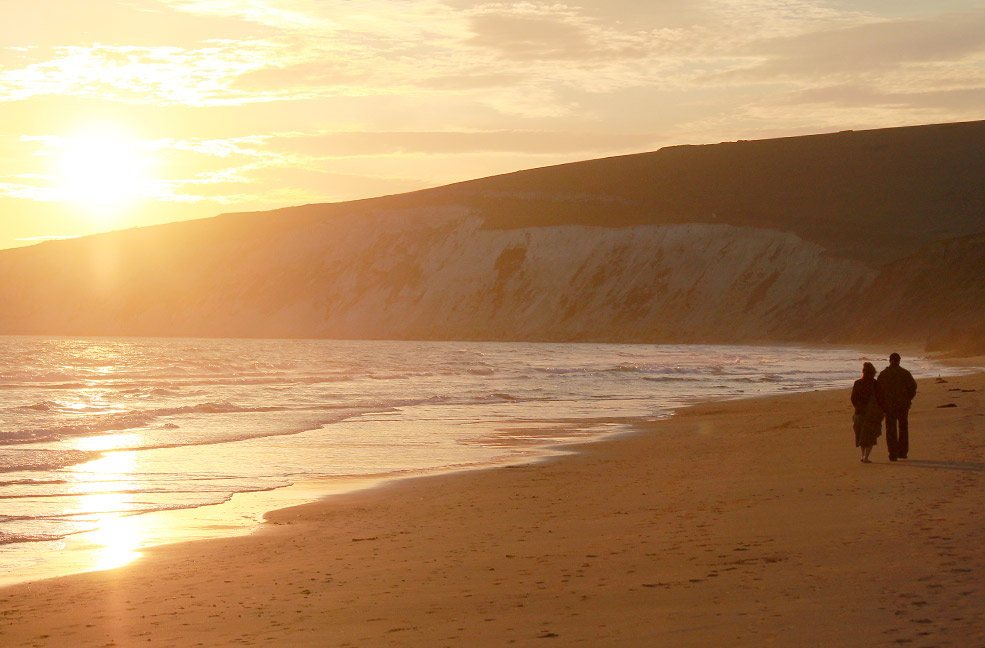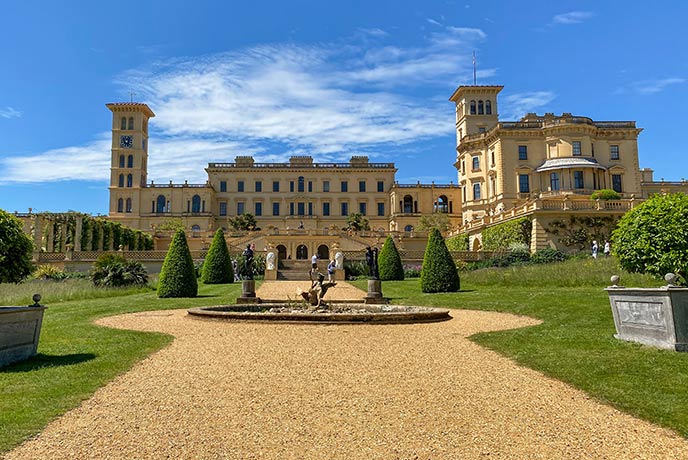The Isle of Wight hosts an impressive network of military buildings, which tell tales of captured royalty, fears of French invasion and life-saving wartime innovation.
Carisbrooke Castle and The Needles Old Battery are the headliners but there are several other coastal forts with their own stories to tell.
Many of them are ‘follies’ which were built for a Victorian-era threat which never arrived. Today, they house everything from lions and tigers to planetariums and playgrounds. Others have been lovingly turned into public parks which are havens for wildlife.
Check out our list of the best historic houses on the Isle of Wight to add even more history to your visit!
Carisbrooke Castle, Central Wight
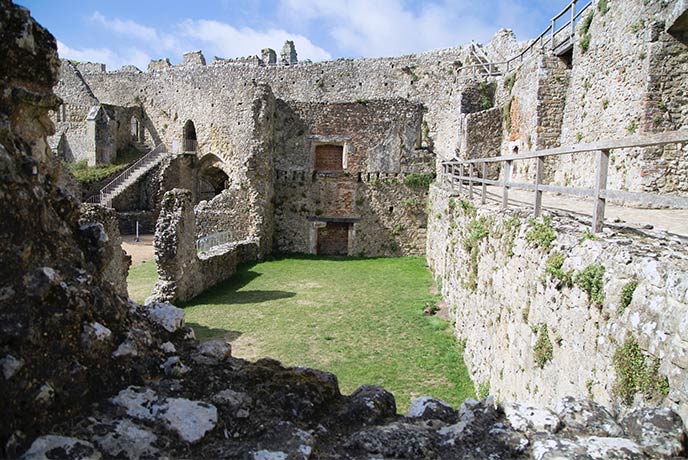
Carisbrooke Castle is one of the most famous of the Isle of Wight’s historic sites. This stunning Norman fortress dominates the local landscape and reveals a millennium of history. Most famously, it held King Charles I prisoner – despite his plots to escape!
The King spent around a year at the Castle from 1647 following the end of the First Civil War. Make sure you visit the window where the royal prisoner became stuck between bars during one failed escape.
Younger visitors will love walking the walls and gazing through the narrow windows which were neatly designed for firing arrows at invaders. The epic climb up to The Keep offers the best view of all, with a 360 degree panorama which stretches all the way to the coast from the centre of the Island. The Keep was added in the 12th century as an extra line of defence and had its own well to provide water to soldiers who were keeping guard.
A highlight is the castle’s giant donkey-powered wheel, which is still used to pull up buckets of water. Don’t worry though, the donkeys are well rewarded and only walk for a few minutes each day! Every donkey’s name begins with a J, as a nod to the name King Charles I used in his coded letters sent to allies on the outside.
The castle’s museum, chapel and gardens are also worth a visit. The gardens are named after Princess Beatrice who lived at the Castle whilst serving as the Island’s Governor.
Throughout the year, you’ll be treated to activities organised by English Heritage such as summertime jousting on the King’s bowling green and themed trails around the ramparts.
Allow a bit of time for the short walk around the castle’s moat and around the village of Carisbrooke with its trickling fords and 900 year old church.
Yarmouth Castle, West Wight
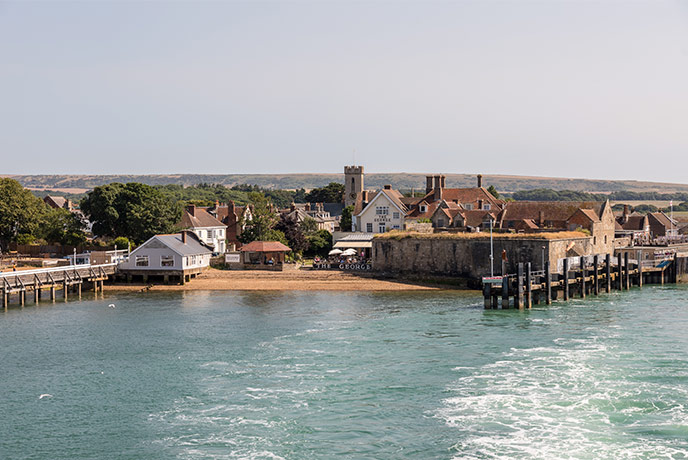
This West Wight castle is on a much smaller scale than Carisbrooke Castle but it holds a wonderful coastal charm and impressive sea views.
Its history dates back to Henry VIII, who drew up plans for forts on either side of the Solent in the mid-16th century. It was finally completed in the last year of the King’s reign.
The plan was that Yarmouth’s and Hurst’s Castles would work together to stop unwanted visitors from taking over the Island. It was equipped with more than 30 guns at one point and later played a role in the Civil Wars of the 17th century.
Today, the Castle is nestled between Yarmouth’s historic wooden pier and The George hotel. Take a bit of time to wander around the streets with an ice cream or stay for a meal - the Yarmouth Gallery is a particularly interesting visit. It is only a small town, but there is plenty of activity around the harbour on a summer’s day.
Fort Victoria Country Park
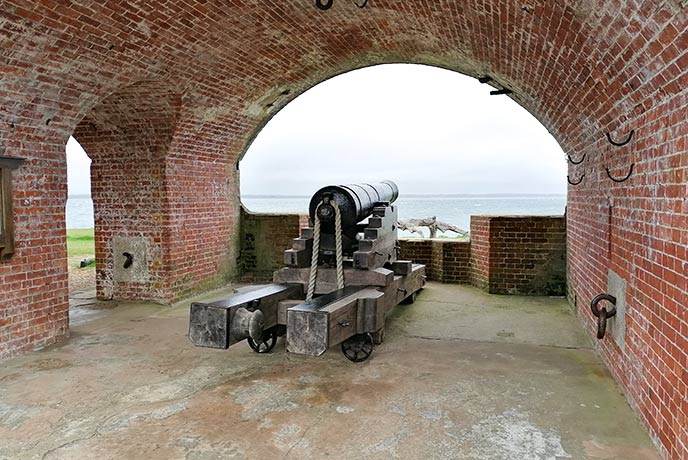
Just up the road from Yarmouth Castle you’ll find Fort Victoria. Many visitors combine the two to make a day of it.
This more modern building was one of several Isle of Wight forts built in the 1850s and 1860s to protect the Solent from a possible French invasion. The government saw the Island as a vulnerable spot for invasion from enemies who would then regroup and attack the mainland.
The French threat never arrived but Fort Victoria was used as a barracks for local military for a long time afterwards.
As you may have guessed, the name has royal connections. Queen Victoria was living at Osborne on the Isle of Wight at the time and it was named in her honour after Prince Albert cast an eye over plans for the Fort.
Nowadays, Fort Victoria is popular for its sea views and small attractions which have made it their home. Visitors can spend an hour or two spotting the stars in the planetarium or come face to face with the slippery residents of the reptilarium.
The Fort’s adjacent woodland is a great place to explore, with rope swings amongst the trees and a nature trail for younger visitors. Make your way through the footpaths and you’ll come to one of the most secluded beaches on the Isle of Wight.
Puckpool Battery, East Wight
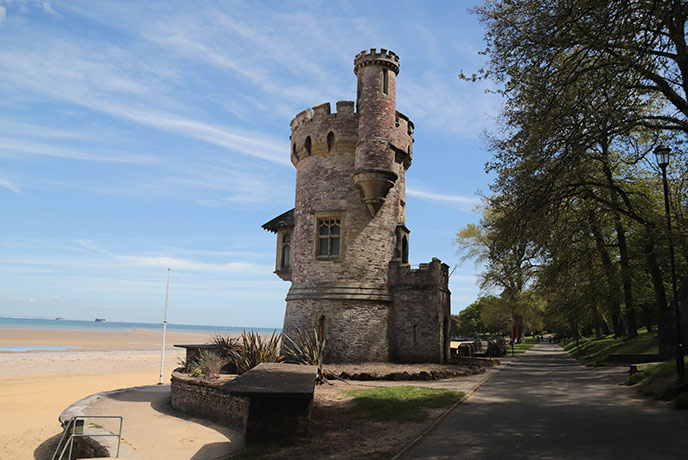
The remains of Puckpool Battery make for some epic exploring and adventures. It was built in the 1860s with 50 guns aimed at the Solent. With Portsmouth opposite, it was seen as a good location to protect the nation’s most precious warships.
In World War II it provided a training base for troops, but was soon handed over to the people as a beachside park. The bases of the gun positions are easy to spot and make for excellent games of hide and seek. If you’re visiting around Halloween you might even spot zombies, as the Battery hosts an annual ‘Park Of The Dead’ event!
The Battery is free to visit and shares a space with an excellent children’s playground, a minigolf course and a café where you can soak up some sunshine. At the far end of the battery is the glorious beach at Appley with its soft sand and famously low tides, which are perfect for kite flying.
Catch a sneak preview of the beach at Appley via our webcam!
Wildheart Animal Sanctuary, East Wight

A trip to the Wildheart Animal Sanctuary offers history with teeth!
The modern zoo began life as Sandown Fort, which was built as part of the ring of coastal defences which punctuated the Island’s coastline. Its finest hour came during World War II when it was home to pumps which sent vital fuel under the ocean to allies.
A trip to Wildheart Animal Sanctuary today is a treat for animal-lovers. Big cats are the most famous residents with much-loved lions, tigers and lynx as well as monkeys and meerkats. There’s also a tiger-shaped playground for younger visitors and special experiences such as feeding the lions or being a junior zoo keeper for the day.
The Sanctuary has recently opened two giant bamboo domes which are home to monkeys and other primates. The domes stand at 12 metres tall and used 2km of bamboo poles for their construction. One of the domes is open to visitors for a special close up view of the residents.
The Needles Old Battery, West Wight
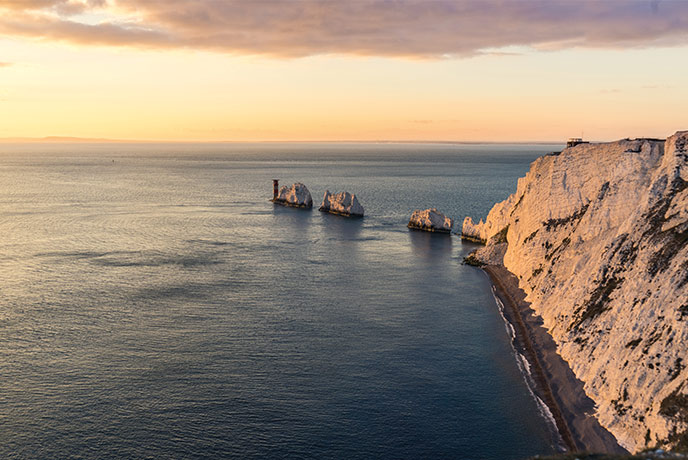
The Needles and Alum Bay is a must-visit attraction for many holidaymakers who set sail for the Isle of Wight. The multicoloured sands and the imposing chalk stacks make for an irresistible selfie shot and walking destination.
Perhaps the best view of all is from the National Trust’s Old Battery. The towering cliffs were converted into a seaside stronghold, with tunnels leading to lookout towers and guns pointed at The Solent. Of course, the feared French invasion never arrived and it became known as one of Palmerston’s Follies, after the Victorian Prime Minister.
Famously, two of the huge guns which defended the battery were pushed off the cliffs onto Scratchell’s Bay because they were no longer needed. The Bay is very hard to access so the guns stayed on the shore for about 80 years before being returned back to their original homes.
When you visit, make sure you allow time to visit the top floor of the tea rooms. You won’t find a better view with a cream tea anywhere else on the Island!
Golden Hill Country Park, West Wight
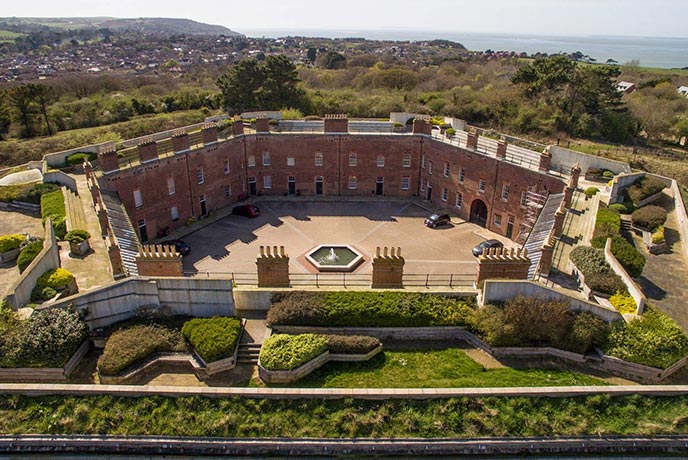
Dog walkers and family strollers will enjoy spending an hour or two at Golden Hill Country Park on the outskirts of Freshwater.
The six-sided Victorian fort at the centre of the park is no longer open to the public, but you can stay here in the wonderfully unique The Tap Room. From here, you can your way round the many well-signposted walking routes. There are three routes to choose from, including a Red Squirrel Walk and View Point Walk for younger children and a Wildlife Walk which explores more of the pleasant surrounding countryside.
The Fort was another part of the ring of coastal defences built in the 1860s. It’s a little way inland but it provided useful accommodation for more than 100 men as well as a hospital. Explorers to the Country Park should also keep an eye out for the foundations of military outbuildings which expose its former life.
A recently added highlight is the Willow Maze. This giant hand-made structure resembles a spider or a claw from above and is great fun for children. Parents can have a well deserved rest and admire the view!
If you have time, combine a visit with a trip to Freshwater Bay, which is home to one of our beach webcams.
St Helen’s Fort, The Solent
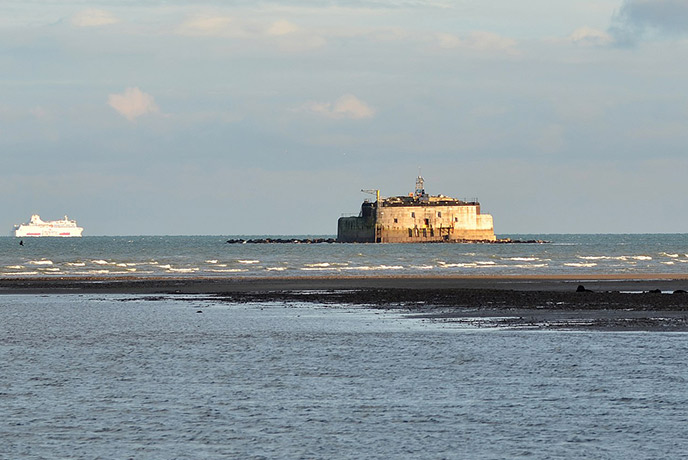
During your ferry crossing to the Isle of Wight you’ll notice the circular forts which are dotted throughout The Solent. There are four in all, but St Helen’s Fort is the easiest to admire from dry land. Head for St Helen’s Beach or Bembridge Beach for the best view.
The chain of four forts provided an imposing deterrent to invasion during the Victorian-era. When that threat subsided, the forts were called into service during the First and Second World Wars. Guns were placed on the forts and searchlights scoured The Solent for suspicious vessels.
Today, St Helen’s Fort is famous for the unofficial walk which sees hundreds of local residents walking round the base at the lowest tide of the year. It’s an impressive spectacle but it can also be treacherous, so it’s not one to be attempted alone!
For places to stay on the historic Isle of Wight, check out our selection of stunning cottages.



